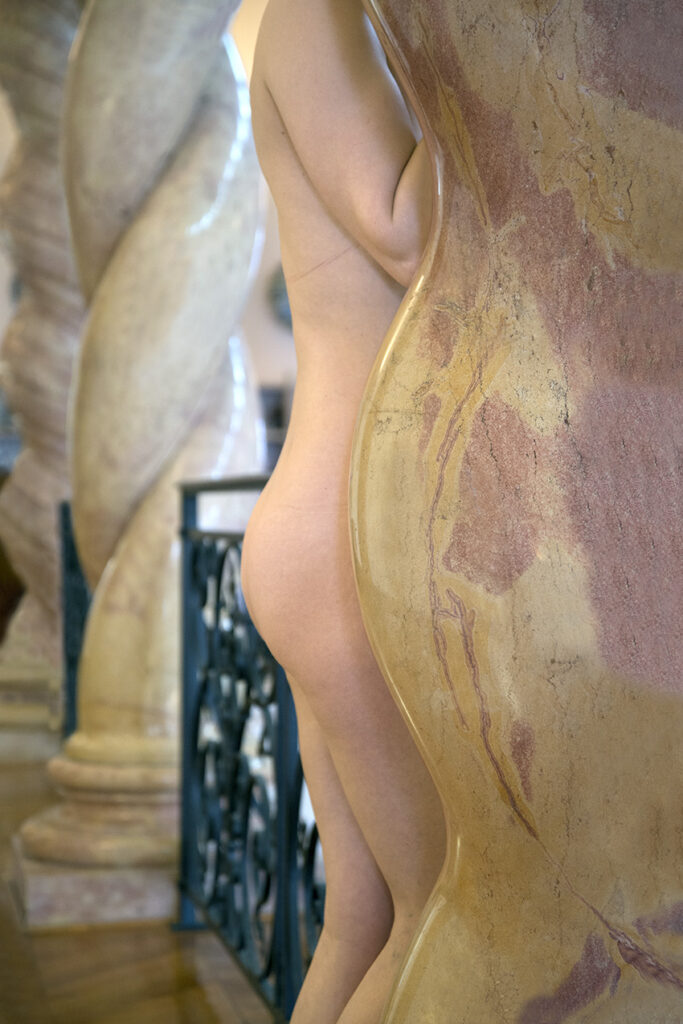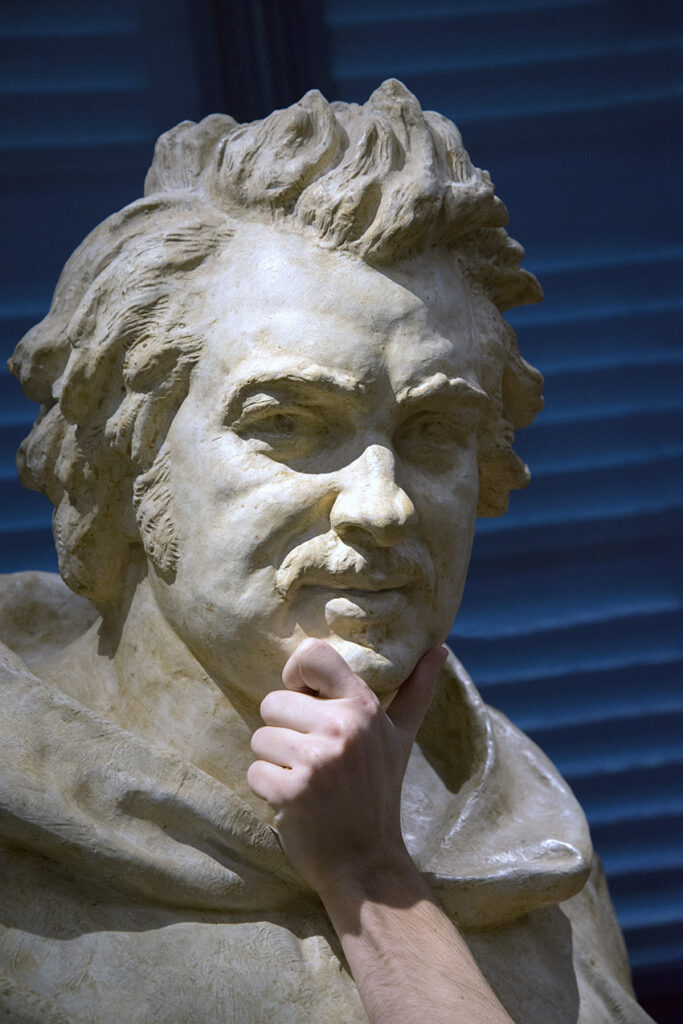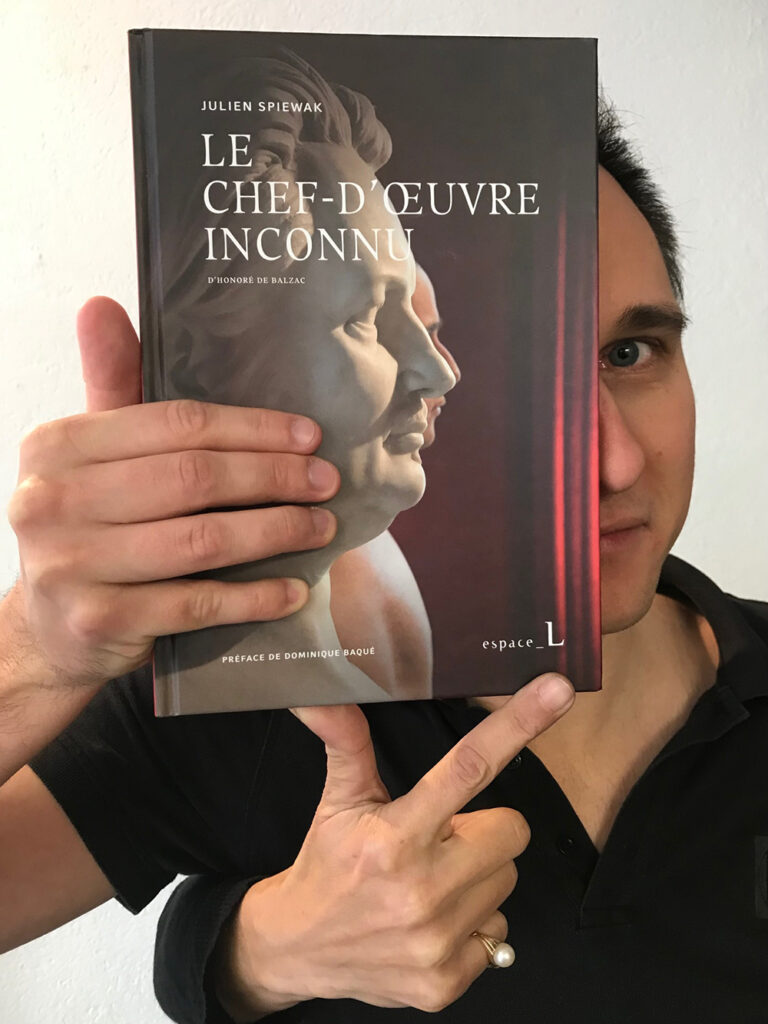Julien Spiewak is young, talented, inspired and modest. His photographic oeuvre has been exhibited at art fairs in Rome, Rio, Seoul, Amsterdam and, significantly, Paris. I meet him at the tenth anniversary of that where-things-happen gallery, Espace L.

Julien took a degree in photography from the University of Paris in 2008. Since, he has with single-minded passion driven one project to considerable success: his Corps du Style (the title being a nod to the Louis XV Style.) His modus operandi comprises an intriguingly staged photograph in which only a part of his or a model’s naked body is set against furniture, painting or sculpture in the sumptuous surroundings of major museums. (Apparently, having access to an empty museum for this exercise is no mean administrative feat!) The resulting images are technically accomplished. Real beautiful stuff! At the same time, there is something a little disconcerting and even amusing in Julien’s striking contrasts between the living body part and the inanimate; the young and the old; the warm and the cold. I can’t help noticing how the rather discrete lines left by the young model’s bra play off the marble’s delicate veins.

So far so good. Close co-operation with Espace L took Julien’s work to the Paris Art Fair in 2020. The Director of the Maison de Balzac tapped him on the shoulder, declared an admiration for his project and invited him for tea so to speak. “Have you read D’Honoré de Balzac’s Le Chef-d’Oeuvre Inconnu (Unkown Masterpiece)?” asked the Director. Julien had not… but he did soon after. Balzac’s short story, set in Paris and published in 1831, centres on the tortured soul of a painter called Frenhofer, an old master of the day. Frenhofer tries to execute a masterpiece on canvas but ends up with a chaos of colour and swirls with a protruding human foot. Reading Le Chef-d’Oeuvre Inconnu was to be a major light-bulb moment in Julien’s life because, here in Balzac’s words, were countless phrases that seemed to speak directly to his Corps de Style photographed over the preceding years.

Serendipity having added a new dimension to his project, Julien then set about doing his thing at the Maison de Balzac. He was also gifted a facsimile of the first edition of Le Chef-d’Oeuvre Inconnu. It’s pages with Julien’s annotations linking his photographs with Balzac’s prose are also on show at Espace L. But the story doesn’t stop there. Enter Leticia – the “L” of Espace L – who, in a former life, was a journalist and publisher. She figured that publishing a book that documents the entirety of Julien’s story and presenting the book together with some of his photographs would make a fitting event to celebrate her ten years in contemporary art in Geneva. She figured right!

Dominique Baqué, a prominent historian of photography, has written the book’s monumental and detailed foreword that reads like an “A” graded academic treatise. She concludes that the real, living, breathing Julien Spiewak represents the incarnation of the fictional Frenhofer. Wow! If she claimed that Julien’s image-making embodies the spirit of Frenhofer, I would readily agree. However, Frehhofer’s spirit is known to live on in real paintings. Paul Cézanne strongly identified with Frenhofer and went so far as to declare “I am Frenhofer!” None other than Pablo Picasso was commissioned to illustrate Le Chef-d’Oeuvre Inconnu. He moved his studio close to a where Balzac’s story unfolded and, during World War II, painted his own very well known masterpiece, Guernica.
As I leave Espace L, I ask Julien what he will be doing in ten year’s time. Without hesitation, he answers “Just this….” I think to myself, I can believe it and by then you will have collected the highest accolades in the world of contemporary photography.
